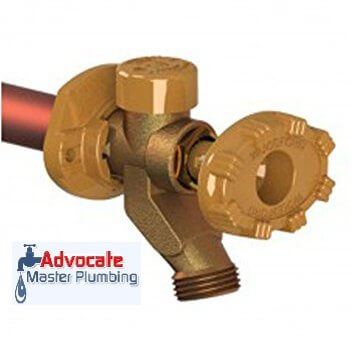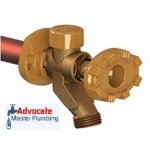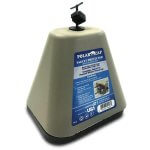
Frozen pipe solutions
The Lee’s Summit area recently went through a polar vortex. This isn’t too uncommon for us, unfortunately. As it came, the phones began to ring at Advocate Master Plumbing.
I had many conversations with scared home owners. The usual issue of frozen pipes or worse burst water pipes would be a discussion I’d repeat many times in the coming days. I’d begin each conversation with the same detailed & methodical questions.
What kind of water pipes do you have? If you have frozen pex pipes it’s unlikely you’ll have burst piping issues. Pex is a memory plastic that is burst resistant. Just get warm air around the affected plumbing fixtures and they should thaw without any damage.
If you have copper or other rigid plastic water piping you could have a problem. Water changing state from liquid to solid creates pressures in excess of 100,000 psi. I’ve seen large commercial bronze water valves that looked like a mortar shell blew through them.
Is your frozen plumbing fixture above a cold garage? If so, open the door between your house & garage. Then place as many electric space heaters as you have in the garage. Leave the plumbing fixture affected turned on while someone is home. When the pipes thaw you’ll hear it.
Is your whole house without water? If so, this is likely a frozen water meter. This can easily be thawed by putting a halogen lamp or drop light into the water meter pit & sealing around the water meter lid with towels or blankets. Leave a faucet on while someone is home. It may take a few hours but it will thaw.
Fix the problem rather than leaving water running. In the spring find where the cold air is infiltrating your home and seal the air leaks. You may need heat tape and pipe insulation if you have a crawl space. Repair damaged water meter lids & rings. Be sure to get enough dirt around the meter ring that the meter lid is just above the dirt.
Owning a home is expensive and complicated sometimes. Insulate your home properly. Seal around house utility penetrations. Seal around your garage door.
I wouldn’t have a plumber in my house if I could avoid it. You do the same. But if you need help always feel free to call me. I’m Jerry Miller. I’m a master plumber and owner/operator of Advocate Master Plumbing.







